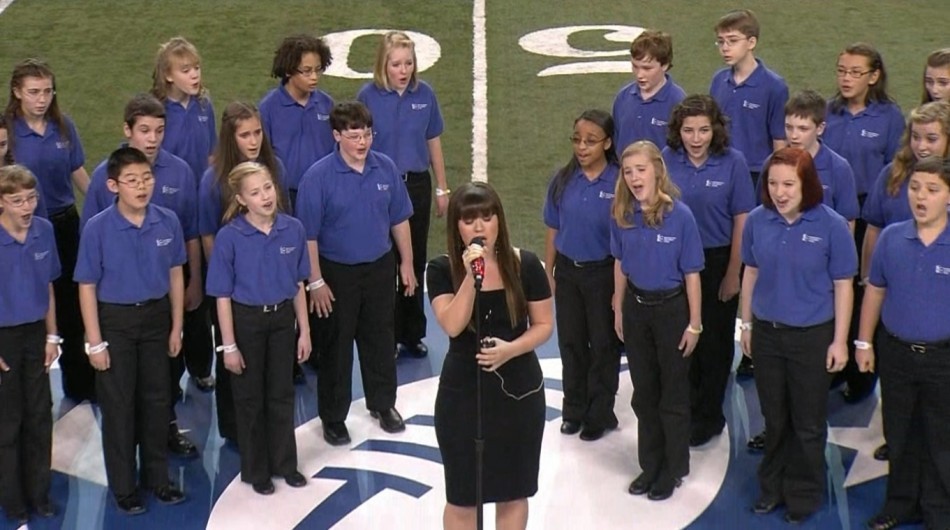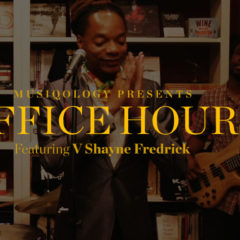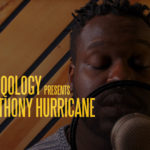The entertainment at the NFL’s annual Super Bowl is often as much of a talking point as the game itself. Particularly, the performer selected for The Star-Spangled Banner is faced with an unenviable task: opening the proceedings, often singing unaccompanied without the benefits of a sympathetic acoustic or the opportunities for multiple takes, and occasionally hampered by an unforgiving PA system. Small wonder that Nat King Cole said, “If you do nothing else in your life, don’t ever sing the national anthem at a ballgame.”
Although we’re now used to hearing spectacularly ornamented versions of the anthem, this hasn’t always been the case. In the late 1950s, Congress was lobbied to approve an official version of it, to avoid inappropriate “swinging or jazzing up” of the melody. It took most of the 1960s and 70s for widespread acceptance of ornamentation of the melody began to take hold. This began to permeate the sporting world, notably with Marvin Gaye’s performance accompanied by a beat box and synth track at the 1983 NBA All-Star Game. The NFL Super Bowl, however, remained distinct from this trend, sticking through the 1980s with performances by white pop singers such as Helen O’Connell, Barry Manilow, Neil Diamond, and Billy Joel. It wasn’t until 1991 that Whitney Houston changed the musical face of the Super Bowl anthem when she sang it in 4/4 rather than 3/4 meter, and a smattering of interpolated vocal ornamentation that came straight from the tradition of gospel music.
Since then, increasingly ornamented versions have become the norm for performances of The Star-Spangled Banner. The last five Super Bowls have seen idiosyncratic renditions by Latina diva Christina Aguilera, country-styled American Idol winner Kelly Clarkson, soulful R&B singer and pianist Alicia Keys, operatic soprano Renée Fleming, and, most recently, Broadway star Idina Menzel. On the surface, the renditions of course sound very different. However, close listening to the vocal lines reveals ornamentations of the melody that are unexpectedly common to all five performers. For example, the melodic fall at the ends of the second and fourth lines on the words “gleaming” and “streaming” is, in the unornamented melody, made up of two quarter notes. In all five performances from the last years, the singers ‘filled in’ the gap between these quarter notes, in a musical gesture that scholar Andrew Legg describes as one of several melodic ornaments fundamental to gospel music. Another example is the in-filling of the leap of a perfect fourth at the beginning of the penultimate line: “O say (does that star-spangled banner…).” Aguilera, Clarkson, and Keys all use an identical melodic outline for this fill-in, which falls under Legg’s category of a ‘gospel gruppetto.’
These are just two out of many examples of how, to a certain degree, these musical artists from very different musical backgrounds are referencing a single vocal style—that of the gospel tradition—through their methods of ornamentation. For some, it’s more overt than others: but the tradition of singing The Star-Spangled Banner in this way can be demonstrated by further perusal of YouTube videos. Clips abound of women and young girls singing the anthem in a florid style that interpolates numerous figures from gospel practice, particularly melismatic runs and timbral plays, some more successfully than others. Ideas about authenticity and learning a gospel vocal style by participation in its rooted traditions do not seem to have much of a place in the realm of The Star-Spangled Banner. At a time when each week seems to bring fresh news reports of a black person being unlawfully killed by the police, when the President of the United States turns to gospel musical traditions to express his mourning for the victims of the shooting at Emanuel African Methodist Episcopal Church, the tradition of singing “the land of the free and the home of the brave” in this intrinsically African-American musical style seems ironic beyond belief.
This flattening of individual musical style extends beyond the notes that are sung. The star performers at the Super Bowl are homogenized even in the way in which they are introduced: they are all described in terms of how many Grammys or Tonys they have won. Their individual accomplishments, place of origin, or musical style are never mentioned. This homogenization all plays into the ‘safe,’ a-political, mass-media-sanctioned type of spectacle that the Super Bowl promotes; and we have to ask what political ends this creep of musical standardization is playing into.
We also can’t ignore the fact that the majority of the performances in recent years have been by women. The last time a man performed the national anthem at the Super Bowl was in 2007 when Billy Joel sang (for the second time in his career). The role of singer is one of the only ways in which women can be made visible—or audible—at the NFL’s Super Bowl, other than cheering on the sidelines. We can read this identification of patriotism and national pride with the stereotypical, patriarchal construction of woman as maternal, nurturing, and an object of the visual and aural gaze of the audience.
For after all, the audience is indeed gazing: we simply cannot sing along with these performances of the anthem. The virtuosic style of these renditions—not just melodic virtuosity, but rhythmic and metric virtuosity too—physically prevents anyone else from joining in. Although occasionally close-ups of some players and fans show them quietly mouthing along, they are often out of sync with the singer as she plays with meter and rhythm, and their voices can never be heard above the amplified soloist. The anthem is staged in such a way that the audience must simply watch and listen to someone else performing their expression of community for them, in a way that, despite surface stylistic differences, is becoming uncannily standardized. It seems to me that we don’t need yet another way of silencing people’s voices, of preventing any sort of musical community forming, and of letting one person appropriate the voices of the many, during a song that everyone can sing.
By Vanessa Williams, Graduate Student in Music at the University of Pennsylvania.
Tags: patriotism, Star Spangled Banner, super bowl


 Share On Facebook
Share On Facebook Tweet It
Tweet It








